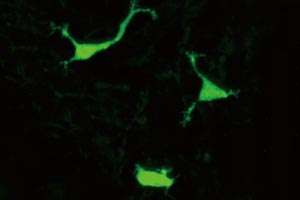Cells discovered in mouse embryos could shed light on newborn skin immunity

A group of cells identified by A*STAR researchers may explain how a newborn baby's vulnerable skin defends against attacks to the immune system at first contact with the environment. In mice, these cells appear in a developing embryo's skin but significantly decline after birth, and are likely to play a role in shaping the skin's immunity to microbes.
Immune cells called T cells are crucial to the body's response to pathogens. But while most T cell types mature in the thymus and are stored in lymph nodes until needed, little is known about the formation of the body's first line of immune defense—the T cell populations that permanently reside in the skin.
The team, led by Florent Ginhoux from the A*STAR Singapore Immunology Network, discovered a clue, Ginhoux admits, "by mistake". The researchers bred a mouse model lacking T cells with the intention of imaging other immune cells. But Ginhoux was surprised to find a significant amount of cells in the mice's skin that "still looked like T cells".
The team extracted these cells which they named Epithelial Lymphoid Cells (ELCs) and applied different conditions to pinpoint their identity. Even though ELCs carried molecules typical to T cell precursors, the researchers could not prompt them to form T cells.
Instead, the authors found, ELCs could be stimulated to produce inflammatory molecules called Interferon-gammas, which leaves them more closely resembling fast-action immune cells called natural killer cells than T cells.
Also, after imaging the skin of embryonic mice at different stages, Ginhoux's team discovered that where ELCs were rare in the skin after eight weeks, a much larger population was found at birth.
"This population is prominent when the mouse is for the first time exposed to the skin microbiome," says Ginhoux. He believes ELCs may be involved in detecting vast changes in the skin microbiome and regulating the response of other immune cells in the skin. This type of response has previously been observed in other skin immune cells called dendritic cells.
"What we're doing now is to see how they respond to microbiota stimulation and what the output is," says Ginhoux.
The team believe ELCs may also be involved in shaping the human immune system. They already detected a small population of the cells in the skin of human fetuses, results which they are now working to confirm.
"This finding will deepen our understanding of the immune responses at the interface between our body and the environment," Ginhoux says.
More information: Francisca F. Almeida et al. Identification of a novel lymphoid population in the murine epidermis, Scientific Reports (2015). DOI: 10.1038/srep12554

















